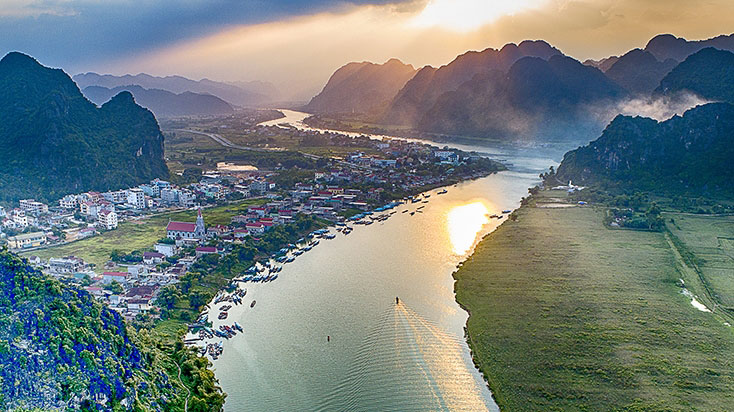


|
|
|
On January 23, clips will be screened in a Hollywood cinema to
introduce the natural beauty of Quang Binh to US film producers, directors,
actors and media groups.
Later from January 25-27, Quang Binh representatives will attend
the New York Times Travel Show in New York to popularise the world’s largest
cave system Son Doong.
Following the event, Quang Binh will invite Hollywood producers,
scriptwriters, directors and actors to the province for sightseeing.
It is the first time a Vietnamese province will introduce its
local images to the world’s movie capital.
Quang Binh was among the three Vietnamese localities chosen for
the shooting of parts of the 2017 Hollywood blockbuster "Kong: Skull Island”.
Scenes were shot in Trang An, Van Long and Tam Coc in the
northern province of Ninh Binh; the Phong Nha-Ke Bang National Park, Rao Nan
River and Yen Phu Lake in the central province of Quang Binh; and Ha Long Bay
in the northern coastal province of Quang Ninh.
Channel News Asia quoted the film’s director Jordan Vogt-Roberts
as saying that Vietnam provided the "perfect aesthetic” for the film.
"The look of Vietnam is gorgeous and otherworldly at the same
time,” he said, adding that "There’s such a raw, powerful and unspoiled
beauty that general audiences hadn't experienced on screen before.”
Quang Binh is home to the UNESCO World Heritage Site Phong Nha
-Ke Bang National Park and the world’s largest cave Son Doong.
The province also has the longest coastline in Vietnam, with
beautiful beaches and delicious seafood.
Quang Binh hopes to welcome 4.3 million visitors in 2019, about
250,000-300,000 of them foreigners, and earn some more than US$214 million
from tourism.
|
Source: NDO